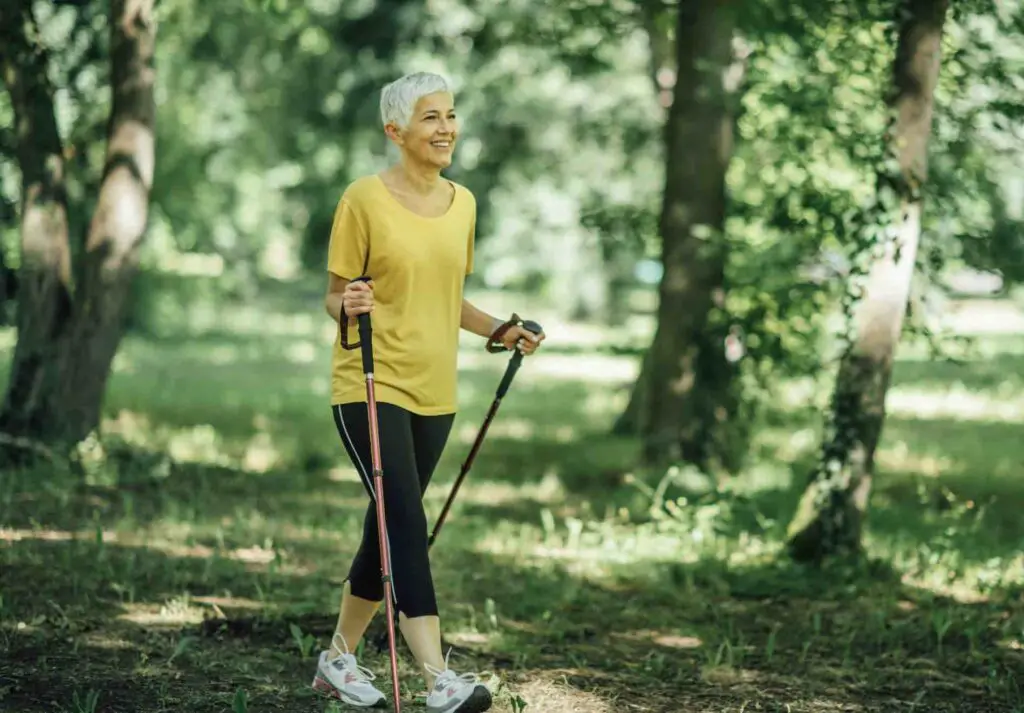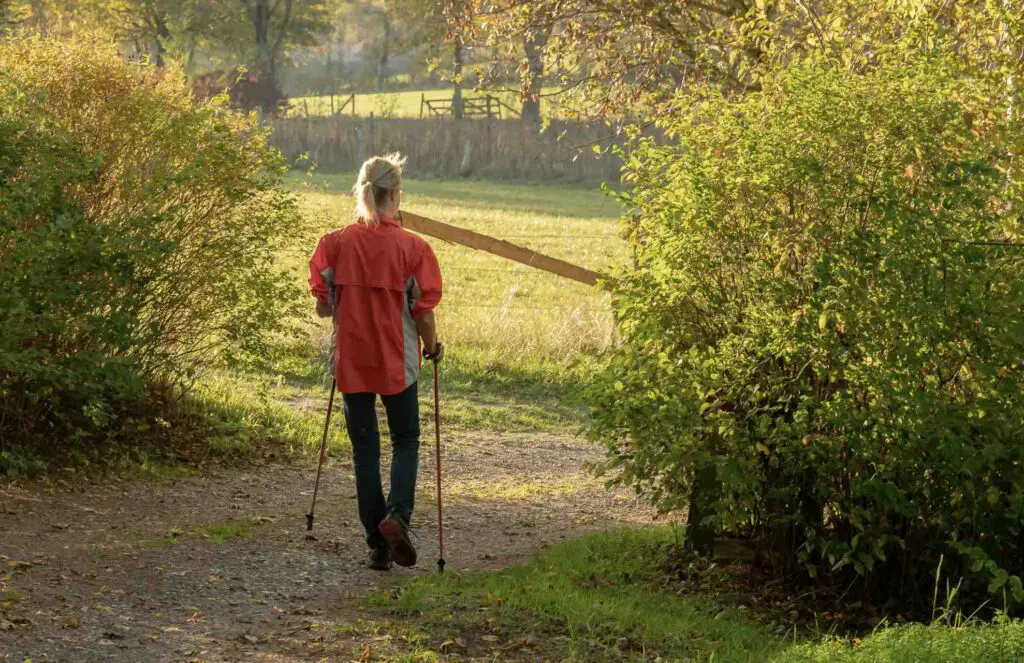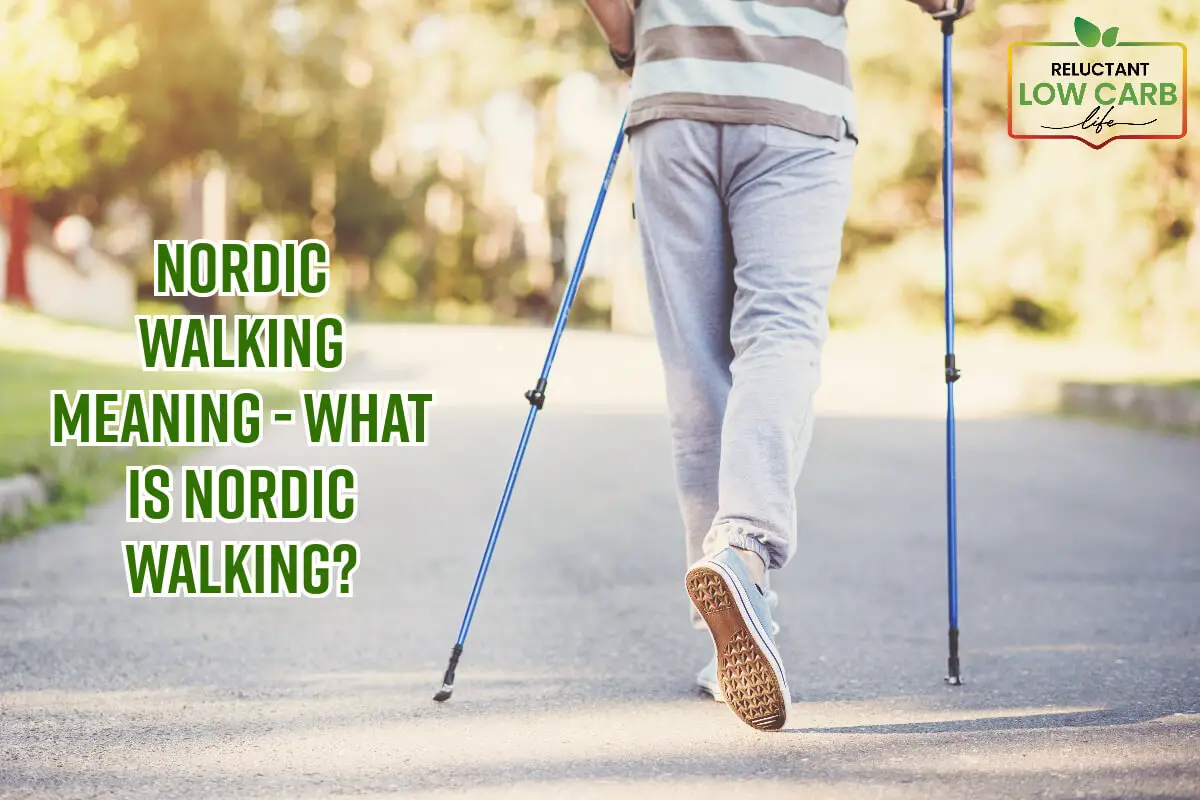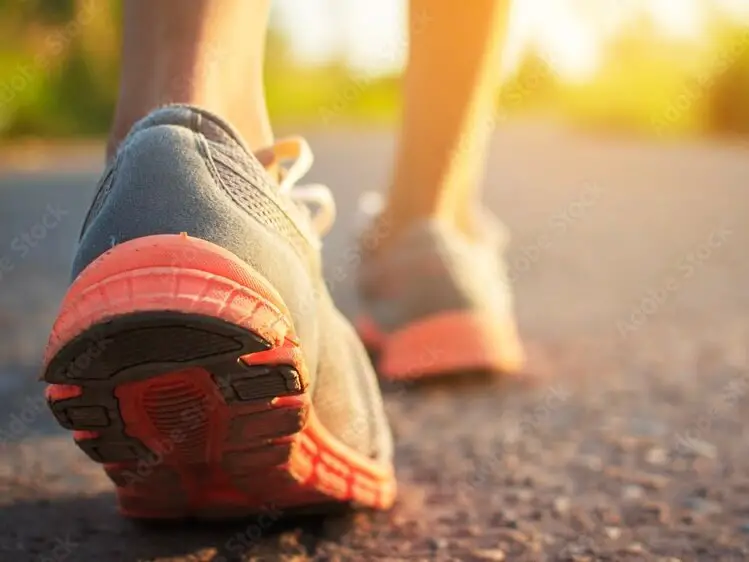In a world where fitness trends come and go, one activity known as Nordic Walking has stood the test of time, gaining popularity across the globe for its numerous health benefits and accessibility.
Nordic walking, also known as pole walking or fitness walking with poles, is more than just a stroll with hiking poles; it’s a dynamic full-body workout that engages multiple muscle groups while offering a refreshing outdoor experience. In this comprehensive guide, we’ll explore the meaning and essence of Nordic walking, uncover its origins, understand its unique benefits, and delve into the equipment and techniques that make it a rewarding and enjoyable exercise.
Table of Contents
- The Origins Of Nordic Walking
- The Key Muscle Groups In Action
- The Health Benefits Of Nordic Walking
- Mastering Nordic Walking Techniques
- Related Question
The Origins Of Nordic Walking
To understand the meaning of Nordic walking, we must first trace its roots. This unique fitness activity originates in Scandinavia, notably Finland, where it emerged as a training method for cross-country skiers during the off-season.
These skiers needed a way to maintain their fitness levels and enhance their endurance during the warmer months, which led to the development of what we now know as Nordic walking. Over time, it evolved from a training tool into a popular exercise regimen for people of all ages and fitness levels.

The Essence Of Nordic Walking
At its core, Nordic walking involves walking briskly using specially designed walking poles. These poles, often made from lightweight materials like aluminum or carbon fiber, are equipped with ergonomic handles to ensure a comfortable grip.
The essence of Nordic walking lies in coordinating these poles in rhythm with your natural walking motion.
The primary goal of Nordic walking is to engage both the upper and lower body, turning a simple walk into a full-body workout. The poles facilitate pushing and pulling motion, propelling you forward and adding resistance to each step.
This integrated movement provides a cardiovascular workout and strengthens and tones various muscle groups.
The Key Muscle Groups In Action
One of the distinguishing features of Nordic walking is its ability to target and activate a wide range of muscle groups. These include:
- Shoulder And Neck Muscles: Engaged in the poles’ controlled push and pull motion.
- Tricep Muscles: Work as you extend your arms with each stride.
- Upper And Lower Back Muscles: Stabilize and control arm movement, improving posture.
- Gluteal (Butt) Muscle Group: Provide power and propulsion during each step.
- Hamstring Muscle Group: Control the swinging motion of your legs.
- Calf Muscles: Stabilize the lower legs and feet, enhancing balance.
- Ankle Stabilizer Muscles: Maintain balance and protect against injuries.
- Quadricep Muscle Groups: Provide power during the push-off phase of each stride.
- Abdominal And External Oblique Muscle Group: Support the spine and pelvis, promoting better posture.
- Forearm Muscles: Engaged in gripping and pushing the poles.
- Pectoral (Chest) Muscles: Assist in the swinging motion of the arms.

The Health Benefits Of Nordic Walking
Understanding the meaning of Nordic walking also involves recognizing its numerous health benefits. Some of these advantages include:
- Improved Cardiovascular Health: The combination of brisk walking and upper body engagement leads to a more effective cardiovascular workout, helping to lower blood pressure and reduce the risk of heart disease.
- Enhanced Muscle Tone and Strength: Engaging multiple muscle groups improves overall strength and muscle tone, including in the upper body, core, and lower body.
- Weight Management: Nordic walking can burn up to 50% more calories than regular walking, making it an effective tool for weight management and fat loss.
- Joint Health: It is a low-impact activity, reducing the stress on joints, making it suitable for individuals with joint issues or those recovering from injuries.
- Better Posture: The focus on upper body engagement encourages better posture, reducing the risk of back and neck pain.
- Stress Reduction: Being in nature and engaging in physical activity can reduce stress and promote mental well-being.

Gear Up for Nordic Walking
You’ll need the right equipment to appreciate the meaning of Nordic walking fully. Read up as we explore the essential gear required for a successful Nordic walking experience, including:
- Nordic Walking Poles: The heart of the activity, these poles come in various lengths and materials to suit your preferences and terrain. Actual Nordic Walking poles have a glove attached to them.
- Footwear: Comfortable and supportive walking or hiking shoes are essential for a smooth and enjoyable experience.
- Clothing: Dress in moisture-wicking and breathable clothing suitable for the weather conditions.
- Accessories: Consider items like a small backpack or fanny pack for convenience. I use a fanny pack to carry my cell phone, keys, money, and water bottle.
Mastering Nordic Walking Techniques
Nordic walking is more than just picking up a pair of poles and heading out for a walk. To truly grasp its meaning and reap the benefits, it’s essential to master the proper techniques, which include:
- Grip and Pole Placement: Learn the correct way to grip the poles and place them behind you as you walk.
- Arm Swing: Understand the importance of coordinated arm swing and pole movement.
- Stride And Pace: Find the correct stride length and walking pace for your fitness level and goals.
- Terrain and Environment: Adapt your technique to different terrains and weather conditions.
Nordic Walking Communities And Events
Discovering the meaning of Nordic walking often involves connecting with like-minded individuals and participating in events. Joining Nordic walking groups or clubs can provide social support, motivation, and a sense of belonging.
Additionally, many regions host Nordic walking events, from leisurely group walks to competitive races, offering opportunities to challenge yourself and explore new places.
Nordic Walking For All Ages And Abilities
One of the most appealing aspects of Nordic walking is its inclusivity. Whether you’re a seasoned athlete or new to exercise, Nordic walking can be tailored to your fitness level.
People of all ages and abilities can enjoy and benefit from this activity, making it a versatile fitness option. One of the great things about Nordic Walking is that anyone can do the sport.
Nordic walking isn’t just a physical activity; it’s a holistic experience that engages the mind, body, and spirit. It’s a means of connecting with nature, improving physical fitness, and fostering a sense of well-being.
The meaning of Nordic walking lies in its ability to transform a simple walk into a dynamic full-body workout that anyone can enjoy. So, grab your poles, step outside, and embark on a journey to discover the many rewards that Nordic walking has to offer.
At Reluctant Low Carb Life, we are staunch advocates of the Health Trifecta: Fullness, Fitness, and Freshness. Additionally, we embrace the pillars of health, wellness, and graceful aging. Our mission is to provide honest and precise information to individuals dedicated to adopting a healthy lifestyle while enhancing their fitness and well-being.
We have a free monthly newsletter that is filled with information and helps you remain updated. Subscribe to the Reluctant Low Carb Life newsletter by clicking here.
Listen to our weekly podcast, Reluctant Low Carb Life, on all the major podcast platforms by clicking here.
Follow us on Instagram and Facebook by clicking here.
Related Question
Nordic Walking Origins – Unearthing The Origins And History
The history and origins of Nordic walking are intriguing, tracing many years. The sport is primarily credited to Finland, where it was actively promoted. Join us as we delve into the captivating history and origin of Nordic Walking.
You can read more about Nordic Walking Origins – Unearthing The Origins And History by clicking here.
Is Nordic Walking A Good Workout?
But just by adding Nordic walking poles to your regular walking routine, you can see substantial benefits to your walking. Nordic walking is a low-impact full-body workout with many benefits you will not receive just from normal walking.
You can read more about Is Nordic Walking A Good Workout? by clicking here.
Is Nordic Walking Better Than Regular Walking?
Nordic walking is shown to engage about 90% of your muscles. It is known to be a superior exercise to just regular walking. There are many added benefits to adding Nordic walking poles to your walking routine. It is a relatively simple and easy walking exercise to do.
You can read more about Is Nordic Walking Better Than Regular Walking? by clicking here.








